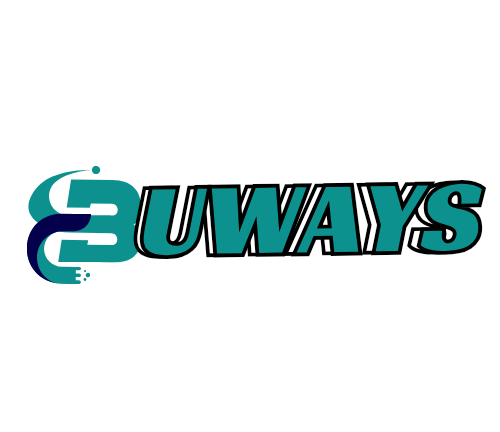In today’s digital age, the prospect of turning your skills into a profitable freelance career online has never been more attainable. Whether you’re a creative designer, a seasoned writer, or a tech-savvy developer, the online marketplace is brimming with opportunities just waiting for you. As remote work continues to gain traction, now is the perfect time to harness your unique talents and carve out a niche for yourself. Imagine waking up each day, knowing you’re doing what you love while earning a sustainable income. This guide will walk you through the essential steps to transform your skills into a thriving freelance venture. From identifying your strengths to marketing yourself effectively, we’ll explore the strategies you need to succeed in this exciting landscape. Prepare to embark on a journey that not only enhances your professional life but also gives you the freedom and flexibility you’ve always dreamed of. Your adventure into the world of online freelancing starts now!
Understanding the Freelance Economy
The freelance economy has seen a monumental rise over the past decade, driven by advancements in technology and changing attitudes towards work. This gig economy allows individuals to work on a project-by-project basis, without the constraints of a traditional 9-to-5 job. It’s a compelling option for those who crave flexibility and independence. Moreover, the ability to work remotely means freelancers can choose jobs from a global marketplace, vastly expanding their opportunities.
With platforms like Upwork, Fiverr, and Toptal, freelancers can now easily connect with clients who need their services. These platforms provide a structured environment where freelancers can showcase their skills, apply for projects, and receive payments securely. As the demand for freelance services continues to grow, more professionals are considering this career path. The shift is not only beneficial for freelancers but also for businesses looking for specialized skills on a flexible basis.
The freelance economy is also characterized by its diversity. From graphic design and content writing to software development and digital marketing, the range of services required is extensive. This diversity means that almost any skill can be monetized, provided there is a market need. Understanding this economy is crucial for anyone looking to transition into freelancing. It’s about knowing where the demand lies and positioning oneself to meet that demand effectively.
Identifying Your Marketable Skills
Before diving into the freelance market, it’s essential to identify which of your skills are marketable. Start by making a comprehensive list of your abilities, experiences, and strengths. This list should include both hard skills, such as coding or graphic design, and soft skills, like communication or project management. Reflect on past jobs, projects, and hobbies to uncover hidden talents that could be valuable in the freelance world.
Once you have your list, research the demand for these skills in the freelance marketplace. Platforms like Upwork and Freelancer offer insights into what clients are looking for. Pay attention to job postings, the required skills, and the rates offered. This will give you a clear idea of which skills are in high demand and how competitive the market is. It’s also beneficial to look at the profiles of successful freelancers in your field to understand what skills they highlight and how they market themselves.
Don’t be afraid to invest in further education or training if you find that certain skills are particularly in demand. Online courses, certifications, and workshops can help you enhance your abilities and make you more attractive to potential clients. The aim is to ensure that your skills are not only marketable but also competitive. By doing so, you increase your chances of securing freelance projects and building a successful career.
Researching Your Target Audience
Understanding your target audience is a critical step in building a successful freelance career. Your target audience consists of the clients who are most likely to need and value your services. To identify this group, consider the industries that require your skills, the size of the businesses within those industries, and the specific problems they need solving. This will help you tailor your services and marketing efforts to meet their needs.
Conducting thorough market research can provide valuable insights into your target audience. Use tools such as LinkedIn, industry reports, and online forums to gather information about potential clients. Look at the types of projects they post, the language they use, and the pain points they express. Understanding these elements will allow you to craft proposals and marketing messages that resonate with them. Additionally, it’s beneficial to keep an eye on your competitors to see who they are targeting and how they position their services.
Creating detailed buyer personas can be an effective way to visualize your target audience. A buyer persona is a semi-fictional representation of your ideal client, based on data and research. It should include details such as job roles, company size, budget, and common challenges. By having a clear picture of who you’re targeting, you can focus your efforts on attracting the right clients and delivering solutions that meet their specific needs.
Building a Strong Personal Brand
A strong personal brand is crucial for standing out in the competitive freelance market. Your personal brand is the image you project to potential clients and the reputation you build through your work. It encompasses your skills, values, personality, and the unique value you bring to the table. Developing a compelling personal brand involves consistent messaging, professional conduct, and a recognizable online presence.
Start by defining your unique selling proposition (USP). Your USP is what sets you apart from other freelancers and highlights why clients should choose you over others. It could be a particular expertise, a unique approach to solving problems, or a track record of delivering exceptional results. Clearly articulate your USP in all your communications, including your website, social media profiles, and freelance platform profiles.
Creating a professional online presence is another key aspect of building your personal brand. Ensure that your LinkedIn profile, portfolio website, and profiles on freelance platforms are complete, up-to-date, and reflect your brand consistently. Use a professional photo, write a compelling bio, and showcase your best work. Engage with your audience by sharing valuable content, participating in relevant discussions, and demonstrating your expertise. A strong personal brand not only attracts clients but also builds trust and credibility, which are essential for long-term success.
Creating an Impressive Portfolio
An impressive portfolio is your most powerful marketing tool as a freelancer. It showcases your skills, experience, and the quality of your work, providing potential clients with tangible evidence of what you can deliver. A well-crafted portfolio can make the difference between landing a project or losing out to competitors. Therefore, it’s worth investing time and effort into creating a portfolio that truly represents your abilities.
When building your portfolio, focus on quality over quantity. Select a few of your best projects that demonstrate your range and expertise. Each project should include a brief description, your role, the challenges faced, and the outcomes achieved. Where possible, use visuals such as images, videos, or screenshots to make your portfolio more engaging and easier to understand. Providing context and detailing the impact of your work helps potential clients see the value you can bring to their projects.
As you complete more projects, keep your portfolio updated with your latest work. Regularly review and refine it to ensure it remains relevant and impressive. Don’t hesitate to ask for testimonials from satisfied clients to include in your portfolio. Positive feedback and endorsements add credibility and can significantly boost your chances of winning new clients. Remember, your portfolio is a reflection of your professional journey, so make sure it shines.
Setting Your Rates and Pricing Strategies
Setting your rates as a freelancer can be one of the most challenging aspects of starting your career. It’s essential to strike a balance between being competitive and ensuring that your rates reflect the value of your services. Begin by researching the average rates within your industry and for your skill set. Freelance platforms, industry reports, and forums can provide insights into what others are charging.
Consider your level of experience, the complexity of the work, and the time required to complete projects when determining your rates. It’s also important to factor in your operating expenses, such as software subscriptions, equipment, and taxes. A common approach is to calculate your desired annual income and divide it by the number of billable hours you expect to work in a year. This can give you a baseline hourly rate.
In addition to hourly rates, consider offering project-based pricing or retainer agreements. Project-based pricing can be attractive to clients as it provides a clear cost upfront and can often lead to higher earnings for you if you complete the work efficiently. Retainer agreements, where clients pay a fixed amount each month for a set number of hours or deliverables, can provide a steady income stream and long-term client relationships. Be transparent with clients about your pricing structure and be prepared to adjust your rates as you gain more experience and build your reputation.
Finding Freelance Opportunities Online
Finding freelance opportunities online requires a strategic approach and persistence. The internet is teeming with platforms and job boards where clients post freelance projects, but knowing where and how to look can make all the difference. Start by creating profiles on popular freelance websites such as Upwork, Fiverr, Freelancer, and Toptal. These platforms connect freelancers with clients and offer various tools to manage projects and payments.
In addition to freelance platforms, explore industry-specific job boards and websites. For example, Dribbble and Behance are great for designers, while ProBlogger and BloggingPro are ideal for writers. LinkedIn is another invaluable resource for finding freelance opportunities. Join relevant groups, follow companies you’re interested in, and actively engage with potential clients. Don’t underestimate the power of networking and word-of-mouth referrals. Let your existing network know you’re available for freelance work and ask for introductions and recommendations.
When applying for freelance projects, tailor your proposals to each job. Highlight relevant experience, explain how you can solve the client’s problem, and provide examples of similar work you’ve done. A well-crafted proposal demonstrates your professionalism and increases your chances of standing out. Persistence is key, especially when starting. It may take time to land your first few projects, but with determination and a strategic approach, the opportunities will start to flow.
Effective Networking and Building Client Relationships
Networking and building strong client relationships are fundamental to a successful freelance career. Networking allows you to connect with potential clients, collaborators, and mentors who can provide opportunities, advice, and support. Attend industry events, webinars, and online forums to meet people in your field. Engage in meaningful conversations, offer help where you can, and follow up with new contacts to keep the relationship alive.
Building strong client relationships goes beyond delivering quality work. It’s about providing an excellent client experience from start to finish. Communicate clearly and promptly, set realistic expectations, and meet deadlines consistently. Show appreciation for your clients’ business and be open to feedback. Going the extra mile to ensure client satisfaction can lead to repeat business, referrals, and long-term partnerships.
Don’t overlook the importance of maintaining relationships with past clients. Keep in touch with periodic updates or by sharing relevant content that might interest them. A simple message to check in or offer a special discount can keep you on their radar for future projects. Remember, a happy client is more likely to recommend you to others and come back for more work. Building a network of satisfied clients is a powerful way to grow your freelance career.
Managing Your Time and Productivity as a Freelancer
Time management and productivity are critical for freelancers, who often juggle multiple projects and deadlines. Without the structure of a traditional office, it’s easy to become overwhelmed or distracted. Start by creating a dedicated workspace that is free from distractions and conducive to focus. Establish a routine that includes regular working hours, breaks, and time for personal activities. A consistent schedule helps you stay organized and maintain a healthy work-life balance.
Using productivity tools and techniques can significantly enhance your efficiency. Tools like Trello, Asana, and Todoist help you manage tasks and projects, while time-tracking apps like Toggl and Harvest ensure you’re billing accurately. Techniques such as the Pomodoro Technique, where you work in focused intervals with short breaks, can improve concentration and prevent burnout. Prioritize your tasks based on deadlines and importance, and break larger projects into manageable chunks.
Effective time management also involves setting boundaries with clients. Be clear about your availability and communicate any potential delays as soon as possible. Learn to say no to projects that don’t align with your goals or workload capacity. Remember, quality over quantity is crucial. By managing your time well and maintaining high productivity levels, you can deliver excellent work consistently, which is key to sustaining and growing your freelance career.
Tips for Sustaining and Growing Your Freelance Career
Sustaining and growing your freelance career requires strategic planning, continuous learning, and adaptability. Set clear short-term and long-term goals for your business, such as the number of projects you want to complete, income targets, and new skills you aim to acquire. Regularly review your progress towards these goals and adjust your strategies as needed. Staying organized and proactive is essential for long-term success.
Investing in your professional development is another crucial aspect of growth. The freelance market is dynamic, and staying competitive means continuously updating your skills and knowledge. Take advantage of online courses, workshops, and industry conferences to learn new techniques and stay current with trends. Expanding your skill set can open up new opportunities and allow you to offer more value to your clients.
Finally, be adaptable and open to change. The freelance landscape can be unpredictable, with fluctuating demand and evolving client needs. Be prepared to pivot your services, explore new niches, or experiment with different pricing strategies as the market changes. Building a diverse client base and multiple income streams can provide stability and reduce the impact of any single client or market downturn. By staying flexible and committed to growth, you can build a thriving freelance career that offers both financial rewards and personal fulfillment.





